Background:
Part of a comparison of some front-mount intercooler options for the Mk7 is establishing baseline data using the Mk7 GTI intercooler. This post presents data that will be used for comparison purposes in later posts.
Test Procedure:
The details of the FMIC test are shown on the test comparison page.
An overview of the data collection session is shown below:
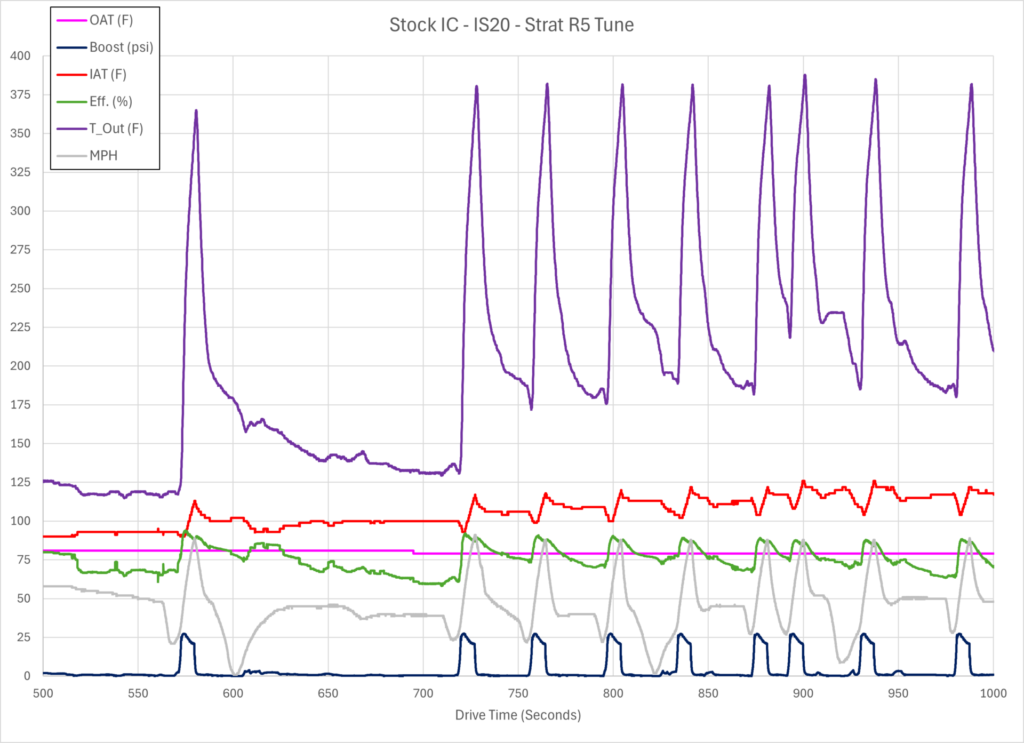
Test Results:
The first chart shows the trend of the IAT delta over the series of pulls. IAT delta is the difference between the Intake Air Temperature (IAT) and the Ambient/Outside Air Temperature (OAT) at an engine speed of 6,000 RPM while operating at full boost.
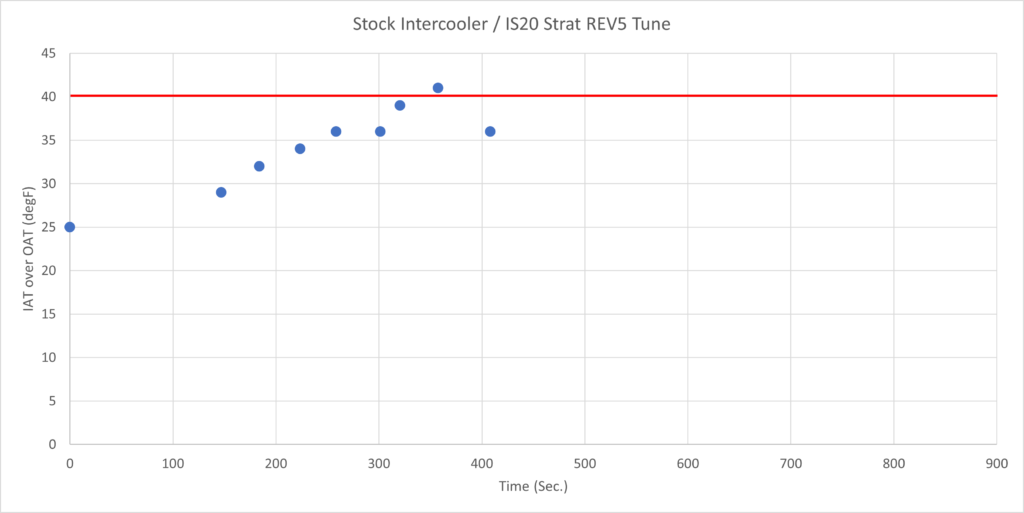
The IAT delta increases steadily over the series of pulls, except for the final pull.
The next chart shows the average of the IAT delta throughout the pulls.

The average shown above masks the range of values that are suggested by the IAT delta trends, to address this the next chart shows the IAT of the first and last pulls.
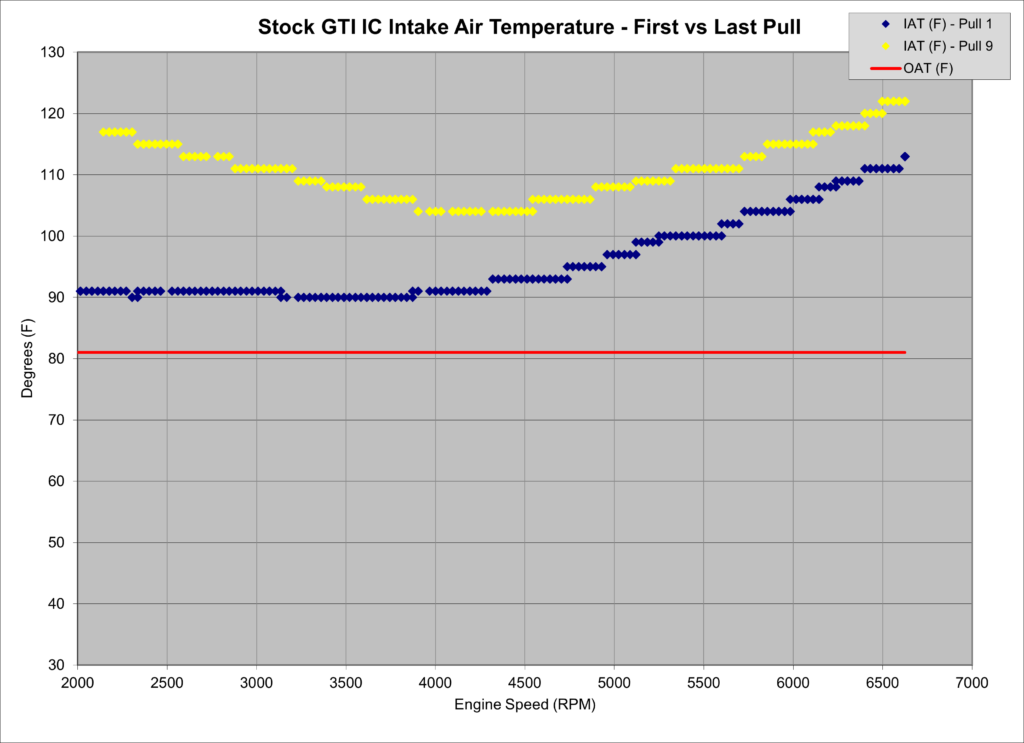
The next chart shows the average IAT (as opposed to IAT delta) across the pulls.
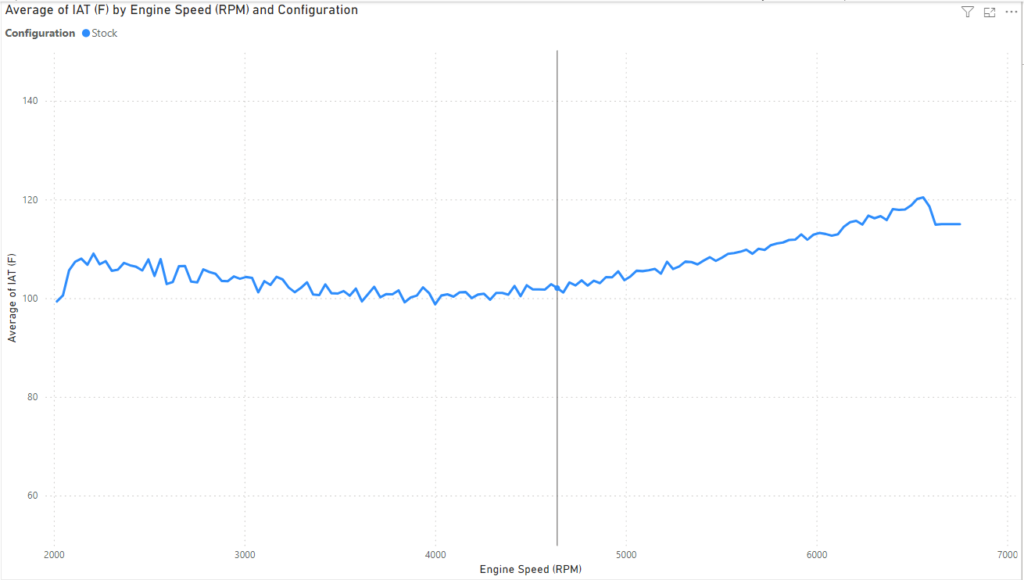
Next is the average temperature exiting the turbocharger throughout the pulls. This measure will be more useful when there is other data to compare it to.
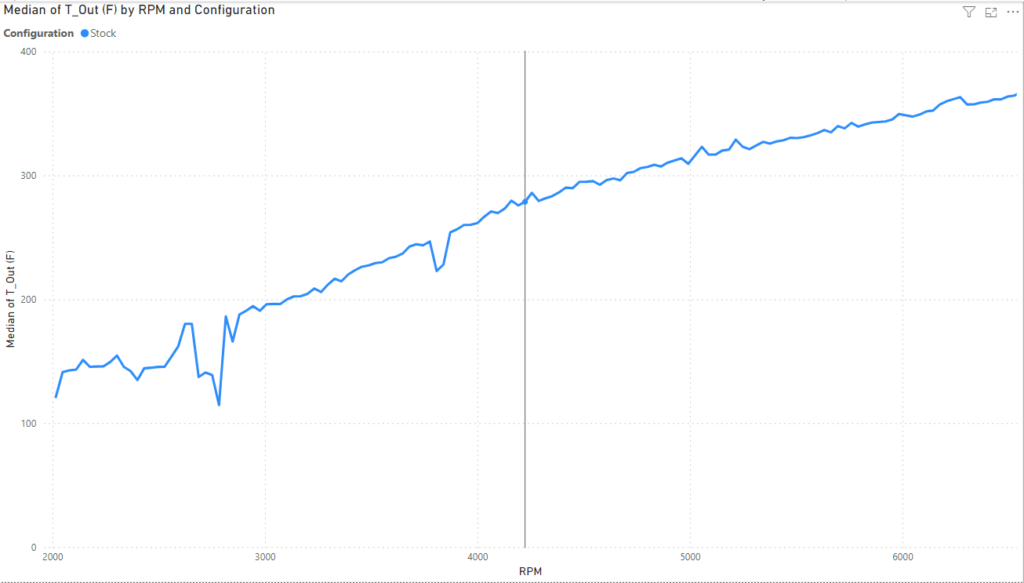
Next is the average intercooler cooling efficiency throughout the pulls.
This is an important measure as it is a common metric for comparing heat exchangers. The effectiveness of a heat exchanger is defined as the ratio of the actual heat transfer to the maximum possible heat transfer.
∈ = (Turbo_{out}-IAT)/(Turbo_{out}-Ambient)In this case, the temperature drop from the compressor outlet to the intake manifold is compared with the temperature difference between the compressor outlet and the outside air.
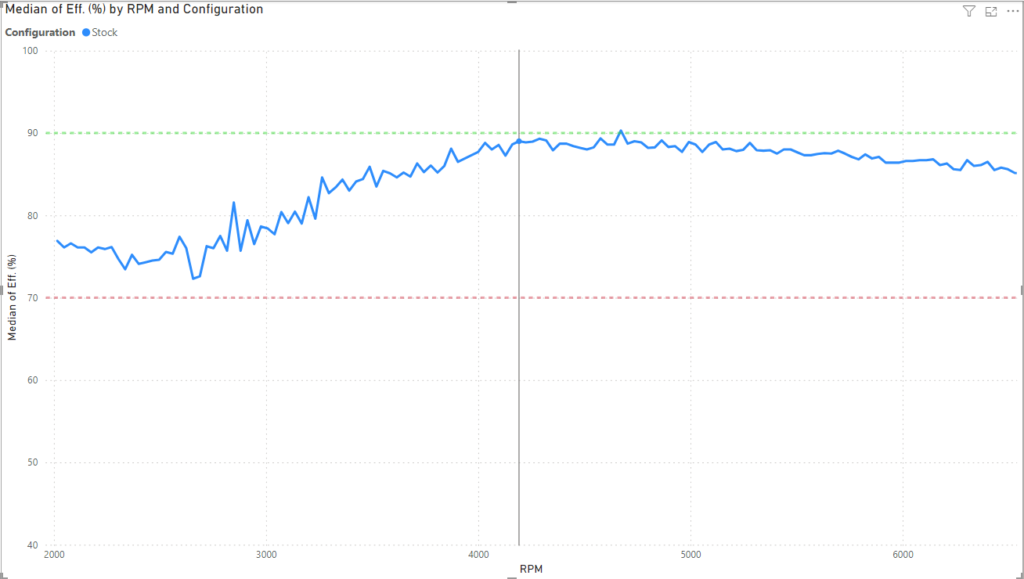
The green and red dotted lines show the range within which Bell intercooler advises is a good range of efficiency for a street application intercooler.
The following chart illustrates the intercooler efficiency over time.
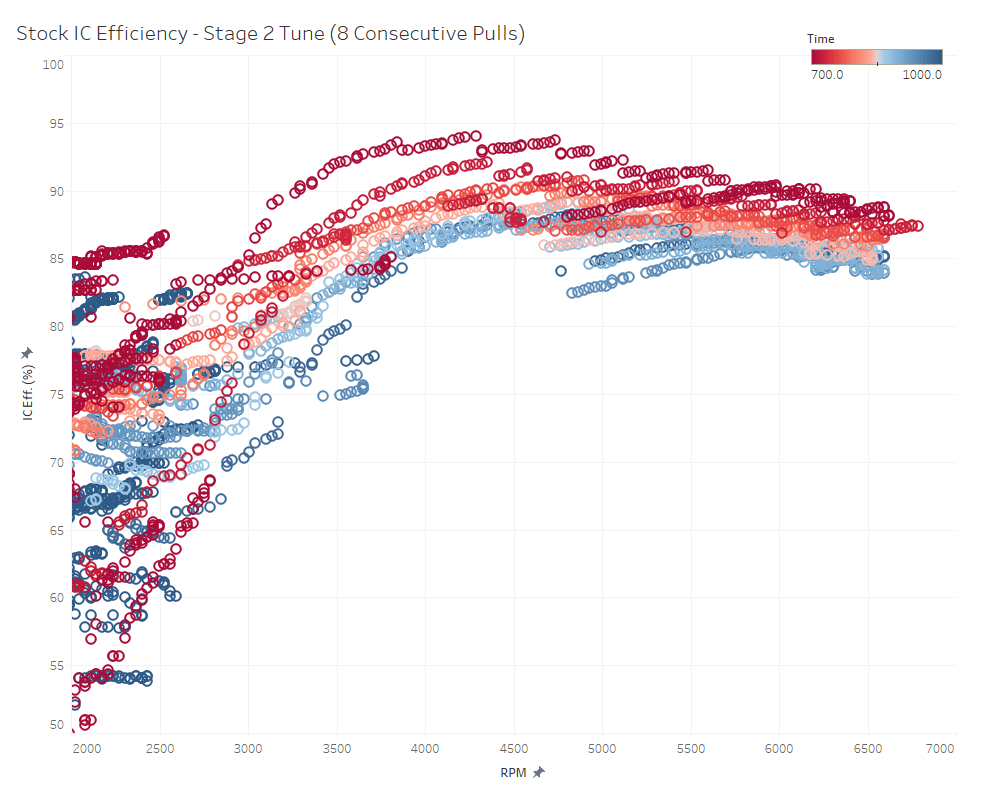
The next chart shows the average pressure drop between the turbocharger compressor outlet and the intake manifold across the pull.
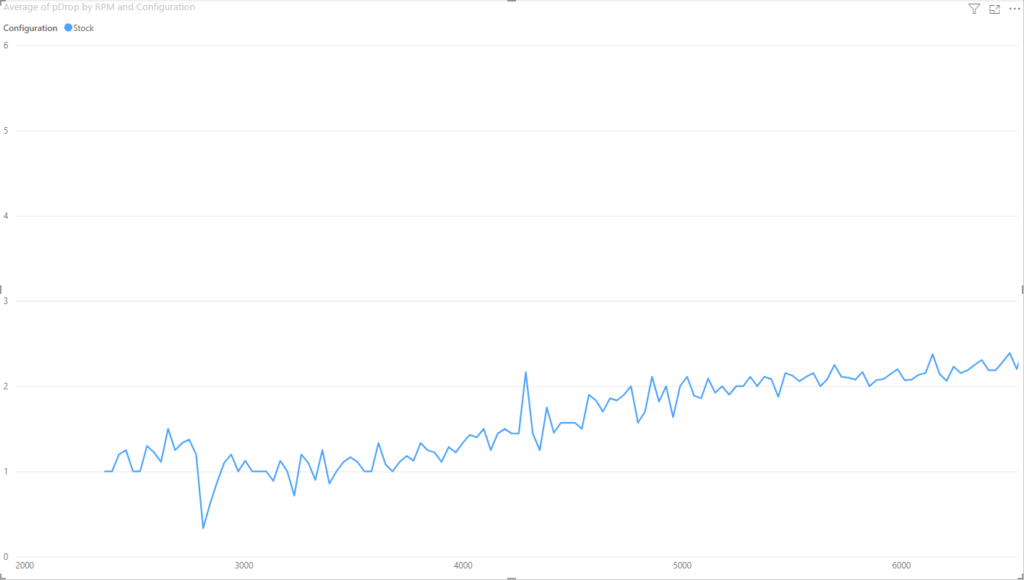
The time for the GTI to accelerate from 47 mph to 84 mph is recorded using a Racebox during each pull. These times are corrected for slight variations in road slope during the acceleration.
The trend of acceleration times is shown below.
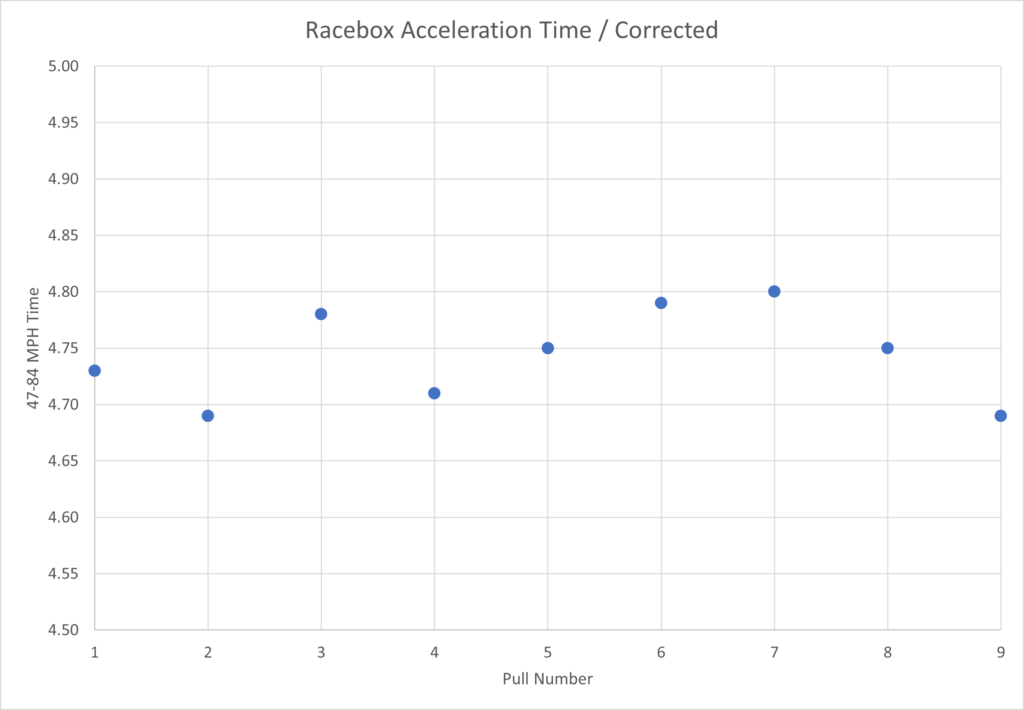
The vehicle speed data is processed using Virtual Dyno to estimate the peak WHP during each pull. The trend of the peak WHP through the pulls is shown below.
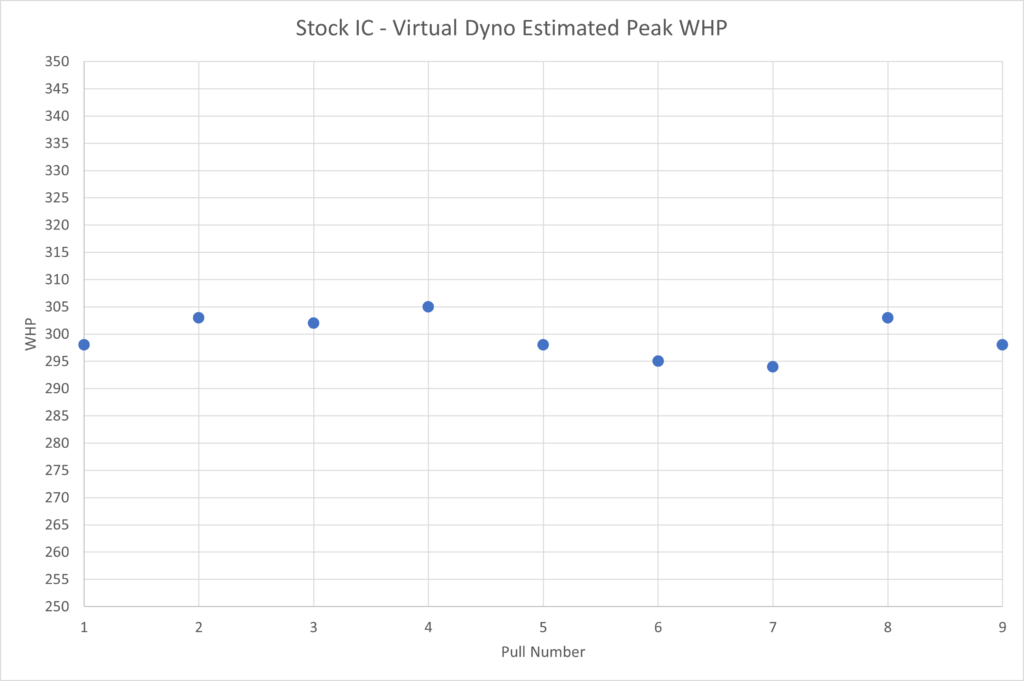
Conclusions:
The stock Mk7 GTI Intercooler was installed in a GTI equipped with an IS20 turbocharger to collect engine and vehicle performance data for later comparison with FMIC options for the Mk7 GTI.
